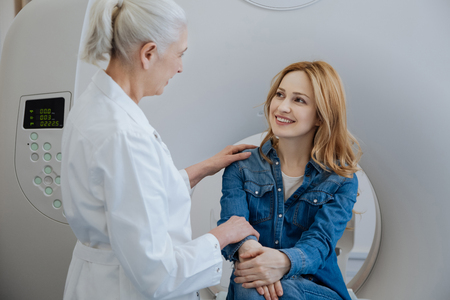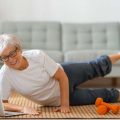Understanding Fall Risk Factors in Older Adults
Falls are a significant concern for older adults in the United States, leading to serious injuries and impacting independence. To effectively prevent falls, its important to recognize the various factors that contribute to fall risk. These factors can be grouped into intrinsic (personal) and extrinsic (environmental) categories.
Intrinsic Factors
Intrinsic factors are related to an individuals health, physical abilities, and lifestyle. Some of the most common intrinsic risk factors among seniors include:
| Intrinsic Factor | Description | Examples |
|---|---|---|
| Medical Conditions | Certain chronic diseases can affect balance and mobility. | Arthritis, diabetes, Parkinson’s disease, stroke |
| Muscle Weakness & Balance Problems | Reduced strength or coordination increases fall risk. | Difficulty rising from a chair, unsteady gait |
| Sensory Impairments | Poor vision or hearing can make it harder to navigate safely. | Cataracts, glaucoma, hearing loss |
| Medication Side Effects | Some medications cause dizziness or drowsiness. | Blood pressure meds, sedatives, antidepressants |
| Cognitive Impairment | Memory or judgment issues may lead to unsafe choices. | Dementia, Alzheimer’s disease |
| Previous Falls | A history of falls increases future fall risk. | N/A (any prior fall) |
Extrinsic Factors
Extrinsic factors involve hazards found in the environment or daily activities. Seniors in the U.S. often face these challenges at home or in the community:
| Extrinsic Factor | Description | Examples/Solutions |
|---|---|---|
| Poor Lighting | Insufficient light makes it hard to see obstacles. | Add brighter bulbs, use nightlights in hallways and bathrooms. |
| Clutter & Tripping Hazards | Objects left on floors increase chances of tripping. | Keep pathways clear, secure loose rugs with non-slip backing. |
| Lack of Safety Equipment | No support devices where needed increases risk. | Install grab bars in bathrooms, use handrails on stairs. |
| Poor Footwear Choices | Shoes that don’t fit well or have slippery soles can cause falls. | Wear sturdy, non-slip shoes with good support. |
| Icy or Uneven Surfaces (Seasonal/Outdoor) | Weather-related hazards are common in many U.S. regions. | Clear snow/ice promptly; repair cracked sidewalks and driveways. |
The Role of Medications in Fall Risk
Many older Americans take multiple prescription medications. Certain drugs—or combinations—can cause side effects like dizziness, blurred vision, or low blood pressure, all of which can increase the likelihood of falling. Regular medication reviews with healthcare providers are important to minimize these risks.
Key Takeaways on Fall Risk Factors:
- A combination of personal health issues and environmental hazards contribute to falls among seniors.
- Recognizing these factors is the first step toward effective prevention strategies tailored to each individual’s needs and living situation.
2. Comprehensive Assessment and Screening Methods
Effective fall prevention for older adults starts with a thorough understanding of each individual’s risk factors. In the United States, using standardized assessment tools helps clinicians and rehabilitation professionals identify those at higher risk for falls and tailor interventions accordingly. Below are some widely used, evidence-based methods and culturally relevant best practices that are simple, reliable, and well-accepted in American geriatric care.
Berg Balance Scale (BBS)
The Berg Balance Scale is one of the most trusted tools for evaluating balance in older adults. It consists of 14 simple tasks—like standing up from a chair or reaching forward while standing—that reflect everyday activities seniors encounter at home and in the community. Each task is scored on a scale of 0 to 4, with a maximum score of 56. Lower scores indicate a higher risk of falling.
Berg Balance Scale: Key Features
| Task Example | What It Assesses | Cultural Relevance |
|---|---|---|
| Standing unsupported | Basic balance | Common daily activity in American homes |
| Picking up object from floor | Mobility and flexibility | Relevant for household chores and self-care tasks |
| Turning to look behind | Coordination and safety awareness | Important for navigating American-style kitchens and bathrooms |
Timed Up and Go (TUG) Test
The TUG test is another evidence-based tool that’s quick and easy to administer in both clinic and community settings. The individual is asked to stand up from a standard armchair, walk three meters (about 10 feet), turn around, walk back, and sit down again. The time taken to complete this sequence provides valuable information about mobility, balance, and risk of falling. A time of more than 12 seconds typically suggests a higher fall risk.
TUG Test: Why It Works Well in the U.S.
- Simplicity: Requires only a chair and clear walking space—easy to set up in clinics, senior centers, or even at home.
- Functionality: Mirrors common real-life situations like getting up to answer the door or use the restroom.
- Cultural Fit: Aligns with the typical American living environment where short-distance walking is frequent.
Culturally Relevant Best Practices
When assessing fall risk among older Americans, it’s important to consider their unique living situations, cultural preferences, and daily routines. Here are some best practices:
- Home Safety Checks: Evaluate the presence of loose rugs, poor lighting, or cluttered pathways—common hazards in many American homes.
- Medication Review: Collaborate with primary care providers or pharmacists to assess medications that may increase dizziness or drowsiness.
- Community Resources: Encourage participation in local exercise classes (like tai chi or chair yoga) offered by YMCAs or senior centers.
- Family Involvement: Include family members in education sessions so they can help implement safety measures at home.
Comparison of Evidence-Based Fall Risk Assessments Used in the U.S.
| Assessment Tool | Main Focus | Time Needed | Cultural Considerations |
|---|---|---|---|
| Berg Balance Scale | Balance during common tasks | 10–15 minutes | Suits daily activities in most American households |
| TUG Test | Total mobility (sit-to-walk) | <5 minutes | Easily fits into routine clinic visits or home assessments |
| Home Safety Evaluation | Environmental hazards at home | 15–30 minutes* | Tailored to individual living environments (apartments, houses) |
*May vary depending on home size
A comprehensive assessment using these evidence-based tools allows healthcare professionals to create personalized plans that address each senior’s unique needs. This approach helps keep older adults safer and more independent in their own homes and communities across the United States.

3. Multidisciplinary Rehabilitation Interventions
Why a Team Approach Matters
Preventing falls in older adults takes more than one specialist. By combining the skills of physical therapists, occupational therapists, and other healthcare professionals, we can create fall prevention plans that are tailored to each person’s unique needs. This collaborative approach leads to better outcomes and helps seniors stay safe and independent.
Roles of Different Specialists
| Discipline | Main Focus | Common Fall Prevention Strategies |
|---|---|---|
| Physical Therapy (PT) | Strength, balance, mobility | Balance training, gait training, strength exercises, assistive device recommendations |
| Occupational Therapy (OT) | Daily activities, home safety | Home safety assessments, adaptive equipment training, strategies for daily tasks |
| Nursing | Health monitoring, medication management | Medication reviews, vital sign monitoring, patient education on health conditions |
| Social Work | Support systems, community resources | Linking to community programs, family support coordination, counseling services |
| Speech Therapy (as needed) | Cognition, communication, swallowing | Cognitive training for awareness and memory, swallowing assessments if at risk of aspiration-related falls |
How Collaborative Care Works in Practice
The multidisciplinary team meets regularly to discuss each patient’s progress and update their fall prevention plan as needed. For example, a physical therapist may identify balance issues during an exercise session and communicate this to the occupational therapist. The OT might then assess the home environment for hazards like loose rugs or poor lighting and suggest modifications. Nurses help monitor changes in health status or medications that could increase fall risk. Social workers connect patients with community resources such as meal delivery or transportation services that support independent living.
Personalized Plans for Every Patient
No two seniors are exactly alike—so their fall prevention plans shouldn’t be either. The team considers factors like medical history, current abilities, living environment, and even personal preferences when designing interventions. Family members are often involved in planning to ensure that everyone is on the same page.
Example: Building a Fall Prevention Plan Together
- A physical therapist teaches balance exercises suited to the patient’s ability level.
- An occupational therapist suggests grab bars in the bathroom and demonstrates how to use them safely.
- A nurse checks for side effects of medications that might cause dizziness.
- A social worker arranges for home-delivered meals if grocery shopping is becoming unsafe.
This team-based approach makes it possible to address all aspects of fall risk—physical, environmental, medical, and social—leading to safer outcomes for older adults.
4. Community-Based and Home Safety Strategies
Enhancing Home Safety for Older Adults
Creating a safe home environment is one of the most important ways to reduce falls in older adults. Simple changes can make a big difference. Here are some common home modifications and their benefits:
| Home Modification | How It Helps |
|---|---|
| Grab Bars in Bathrooms | Provides extra support when getting in and out of the shower or using the toilet. |
| Non-Slip Mats | Reduces the risk of slipping, especially in bathrooms and kitchens. |
| Improved Lighting | Makes it easier to see obstacles, especially on stairs and hallways. |
| Remove Loose Rugs & Clutter | Prevents tripping hazards by keeping pathways clear. |
| Stair Railings on Both Sides | Adds stability and helps with balance while using stairs. |
| Raised Toilet Seats & Shower Chairs | Makes bathroom activities safer and more manageable. |
Utilizing Community Resources in the U.S.
Many communities across the United States offer resources to help older adults stay safe and independent. Some helpful options include:
- Aging & Disability Resource Centers (ADRCs): These centers provide information about local services, home modification programs, and fall prevention workshops.
- Senior Centers: Offer exercise classes like tai chi and balance training specifically designed for fall prevention.
- Meals on Wheels: Delivers nutritious meals and provides regular wellness checks for seniors living alone.
- Community Health Clinics: Provide free or low-cost balance screenings, vision exams, and medication reviews.
- Volunteer Programs: Local volunteers may assist with home safety checks or minor modifications at little or no cost.
The Role of Technology Solutions
Technology can play a big role in keeping older adults safe at home. Here are some popular tech solutions available in the U.S.:
| Technology Solution | Description & Benefit |
|---|---|
| Medical Alert Systems (e.g., Life Alert) | Wearable devices that allow users to call for help with the press of a button if they fall or need assistance. |
| Smart Home Devices (e.g., Amazon Echo, Google Home) | Voice-activated assistants can control lights, remind about medication, or call emergency contacts hands-free. |
| Sensors & Fall Detection Devices | Sensors placed around the house detect movement patterns and alert caregivers if a fall is suspected. |
| Video Doorbells & Security Cameras | Add security and allow family members to check on loved ones remotely for added peace of mind. |
| Pill Dispensers with Alarms | Helps ensure medication is taken correctly, reducing confusion that could lead to falls. |
The Importance of Personalized Strategies
No single solution works for everyone. By combining smart home modifications, using local resources, and choosing technology that fits individual needs, families can create safer environments for their loved ones. Working together with healthcare providers, occupational therapists, and community organizations ensures that fall prevention strategies are both practical and effective for older adults living in the United States.
5. Empowering Older Adults and Caregivers
Understanding the Importance of Education
Empowering seniors and their caregivers is a key part of preventing falls in geriatric rehabilitation. Education helps older adults understand why falls happen, how they can be prevented, and what steps to take every day to stay safe. When seniors feel informed and supported, they are more likely to follow safety recommendations and stay active with confidence.
Culturally Sensitive Communication Techniques
Effective communication should respect each person’s background, language, beliefs, and preferences. In the United States, it’s important to recognize cultural diversity among older adults and their families. Using clear, simple language and avoiding medical jargon makes information easier to understand for everyone. Including family members in discussions can also help bridge any cultural or language barriers.
Tips for Engaging Seniors and Families
| Strategy | Description |
|---|---|
| Use Visual Aids | Show pictures, diagrams, or videos to explain fall risks and prevention tips. |
| Active Listening | Encourage questions and listen carefully to concerns from both seniors and caregivers. |
| Personalized Information | Adapt education materials to match cultural values, languages, and literacy levels. |
| Teach-Back Method | Ask seniors or caregivers to repeat key points in their own words to ensure understanding. |
| Involve Family Members | Include relatives or trusted friends during education sessions so they can reinforce safety practices at home. |
| Cultural Respect | Acknowledge traditional practices or beliefs that may influence care decisions; collaborate respectfully on solutions. |
Building Confidence for Fall Prevention
Seniors often feel more empowered when they know they have a say in their care. Encourage them to share their goals, daily routines, and any fears about falling. Provide practical demonstrations—like safe ways to get up from a chair or use a walker—so they gain hands-on experience. Remind caregivers that their encouragement and support make a big difference in helping loved ones stay independent and safe at home.


